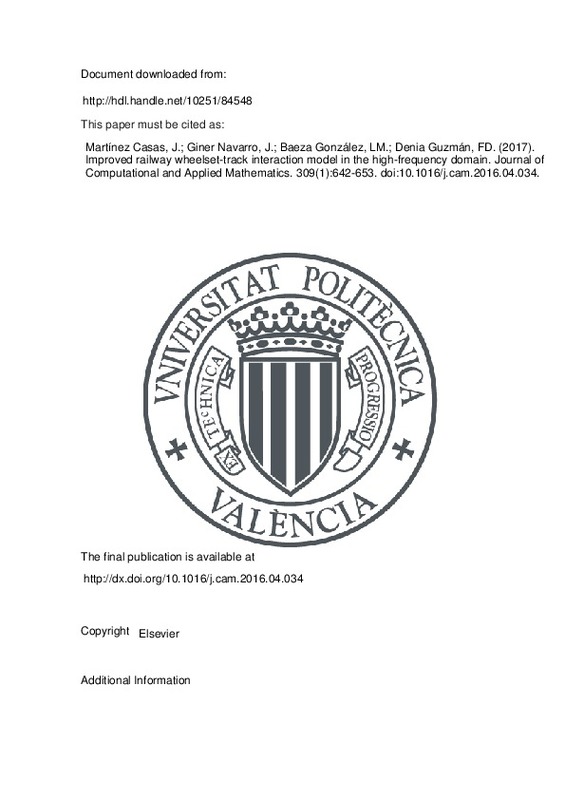JavaScript is disabled for your browser. Some features of this site may not work without it.
Buscar en RiuNet
Listar
Mi cuenta
Estadísticas
Ayuda RiuNet
Admin. UPV
Improved railway wheelset-track interaction model in the high-frequency domain
Mostrar el registro completo del ítem
Martínez Casas, J.; Giner Navarro, J.; Baeza González, LM.; Denia Guzmán, FD. (2017). Improved railway wheelset-track interaction model in the high-frequency domain. Journal of Computational and Applied Mathematics. 309(1):642-653. https://doi.org/10.1016/j.cam.2016.04.034
Por favor, use este identificador para citar o enlazar este ítem: http://hdl.handle.net/10251/84548
Ficheros en el ítem
Metadatos del ítem
| Título: | Improved railway wheelset-track interaction model in the high-frequency domain | |
| Autor: | ||
| Entidad UPV: |
|
|
| Fecha difusión: |
|
|
| Resumen: |
[EN] As it is well known, there are various phenomena related to railway train-track interaction, some of them caused by the high frequency dynamics of the system, such as rolling noise when the vehicle runs over the track, ...[+]
|
|
| Palabras clave: |
|
|
| Derechos de uso: | Reserva de todos los derechos | |
| Fuente: |
|
|
| DOI: |
|
|
| Editorial: |
|
|
| Versión del editor: | http://dx.doi.org/10.1016/j.cam.2016.04.034 | |
| Título del congreso: |
|
|
| Lugar del congreso: |
|
|
| Fecha congreso: |
|
|
| Código del Proyecto: |
|
|
| Agradecimientos: |
The authors gratefully acknowledge the financial support of Ministerio de Economía y Competitividad and the
European Regional Development Fund (project TRA2013-45596-C2-1-R), as well as Generalitat Valenciana (project
...[+]
|
|
| Tipo: |
|







![[Cerrado]](/themes/UPV/images/candado.png)


